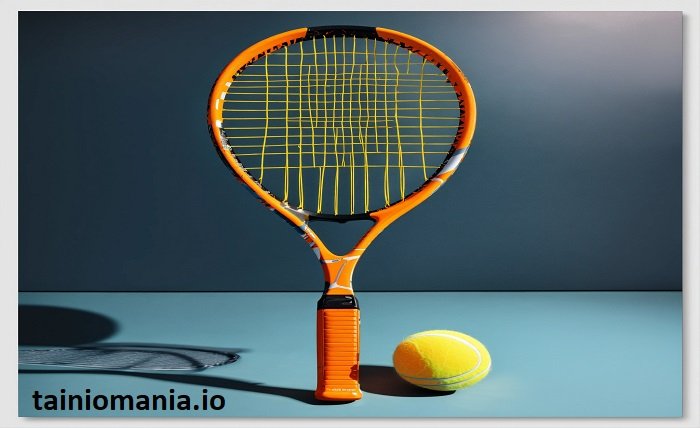Tennis, a sport enjoyed by millions worldwide, combines physical agility, strategic acumen, and mental fortitude. This blog post explores the various facets of tennis, offering a deep dive into its complexities and the joy it brings to players and spectators alike.
The History of Tennis
The origins of tennis trace back to 12th-century France, where it was played by monks as a form of entertainment during religious ceremonies. Over the centuries, tennis has evolved from a rudimentary handball game to the sophisticated sport known today, featuring high-tech equipment and professional tournaments watched by millions. Understanding its history enhances the appreciation of how tennis has become a global phenomenon.
Equipment Essentials
Having the right equipment is crucial in tennis. Players must select racquets and balls that suit their playing style and level of experience. Additionally, the choice of footwear and attire can significantly impact a player’s comfort and performance on the court. This section recommends the best gear for both beginners and advanced players, ensuring everyone is well-prepared to play tennis with the appropriate tools.
Rules of the Game
The rules of tennis are fundamental to playing the game correctly and fairly. From scoring systems like “love,” “deuce,” and “advantage” to intricate regulations governing line calls and fouls, this part of the guide covers all the basics that every player should know. Understanding these rules is essential for anyone looking to take up tennis seriously or just enjoy a friendly match.
Basic Techniques and Strokes
Mastering tennis requires learning several keystrokes, including the serve, forehand, backhand, volley, and lob. This section breaks down each technique with step-by-step instructions and tips for practice. Whether you’re trying to refine your backhand or develop a powerful serve, these insights can help improve your overall game.
Training and Conditioning
Tennis is physically demanding, necessitating both endurance and explosive strength. Effective training programs focus on cardiovascular fitness, strength training, agility drills, and flexibility exercises. Tailoring your conditioning routine to meet the specific demands of tennis not only improves your performance but also reduces the risk of injury.
Mental Strategies
Mental toughness is as critical in tennis as physical skill. This section discusses psychological aspects such as focus, resilience, and the ability to read opponents. Strategies to enhance mental fortitude can help players maintain concentration throughout long matches and handle the pressure of competition more effectively.
Iconic Matches and Players
Tennis is rich with stories of legendary matches and players who have left indelible marks on the sport. From epic Grand Slam finals to the riveting rivalries between top players, these tales not only entertain but also inspire. This part of the post recounts some of the most memorable moments and figures in tennis history, illustrating the sport’s capacity for drama and excitement.
Playing Tennis for Health and Fitness
Playing tennis offers numerous health benefits, including improving cardiovascular health, enhancing coordination, and boosting mood. This section outlines how regular tennis play contributes to physical well-being and why it is an excellent choice for maintaining fitness and health.
Participating in Tournaments
For those looking to test their skills, participating in tennis tournaments can be a thrilling challenge. This section guides you through the process of finding and entering tournaments, what to expect during competition, and how to prepare both mentally and physically. It’s a great opportunity for tennis players to gauge their skills against others and enjoy the camaraderie and competitive spirit of the sport.
Conclusion
Tennis is more than just a sport; it’s a passion that cultivates physical and mental discipline, offers lifelong health benefits, and brings people together in a competitive and fun environment. Whether you are just starting or have been playing for years, there is always more to learn and achieve in tennis. Embrace the challenges and enjoy the journey of improving your game.
FAQ
- What do I need to start playing tennis?
- To start playing tennis, you need a tennis racquet, balls, appropriate footwear, and access to a tennis court. Basic knowledge of the rules and techniques is also helpful for beginners.
- How can I improve my tennis game?
- Improving your tennis game involves regular practice, focusing on technique, conditioning, mental strategies, and playing against opponents who challenge you. Consider taking lessons from a coach to receive personalized advice and strategies.
- Where can I play tennis?
- Tennis can be played at public parks, sports clubs, and private courts. Check local community centers and schools, as they often have facilities available for public use.
- Is tennis good for my health?
- Yes, tennis is excellent for health. It improves cardiovascular fitness, muscle strength, balance, and coordination, and provides mental health benefits by reducing stress and anxiety.
- How long does it take to learn tennis?
- Learning the basics of tennis can take a few weeks, but becoming proficient may take several months to years of regular practice and play. The learning curve varies greatly depending on individual effort and natural ability.













